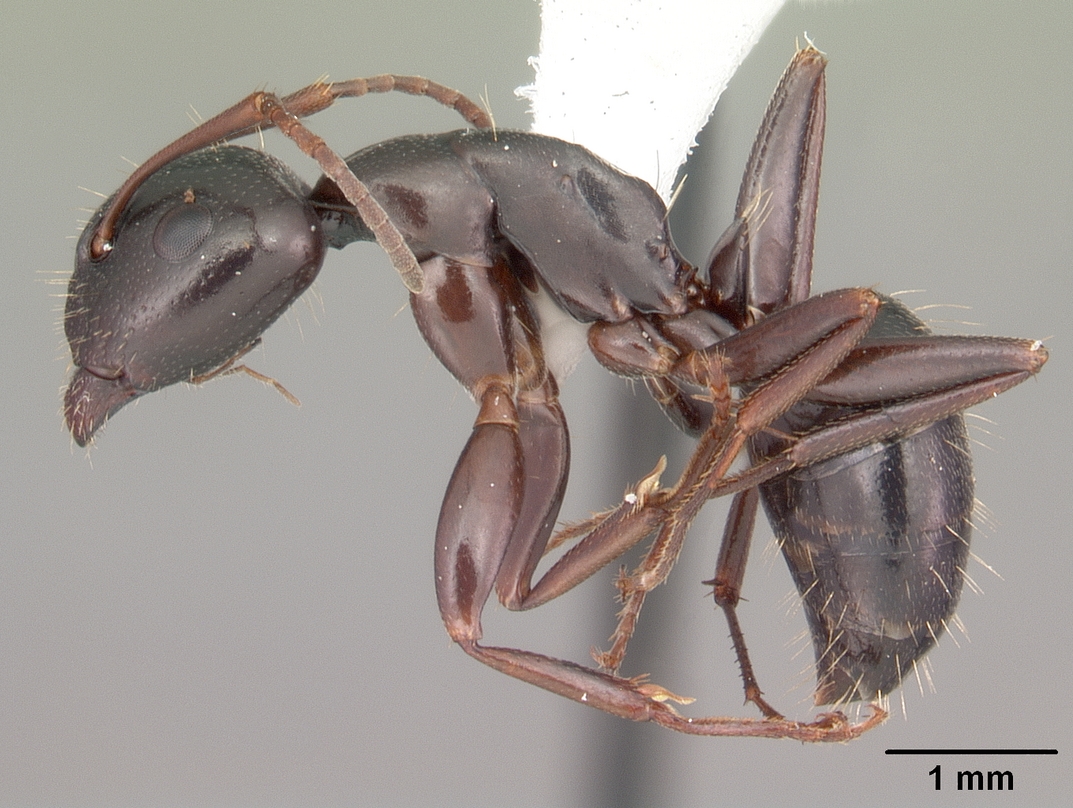Map Snapshot


2 Records
Status
Found in woodlands and woods edges. Creighton (1950) considered the species to be rare and associated with hickory. Wesson and Wesson (1940) associated C. caryae with oak-hickory woodlands; Florida specimens examined by Snelling (1988) were also collected from hickory. (See Frye et al., 2014)
Seasonality Snapshot
Use of media featured on Maryland Biodiversity Project is only permitted with express permission of the photographer.
Source: Wikipedia
| Camponotus caryae | |
|---|---|

| |
| Scientific classification | |
| Domain: | Eukaryota |
| Kingdom: | Animalia |
| Phylum: | Arthropoda |
| Class: | Insecta |
| Order: | Hymenoptera |
| Family: | Formicidae |
| Subfamily: | Formicinae |
| Genus: | Camponotus |
| Subgenus: | Myrmentoma |
| Species: | C. caryae
|
| Binomial name | |
| Camponotus caryae (Fitch, 1855)[1]
| |
| Synonyms | |
| |
Camponotus caryae is a species of carpenter ant native to the eastern United States, eastern Canada, Nuevo Leon, Chihuahua, and possibly some parts of the western United States, Spain, Italy, and Bulgaria.[2]
References
[edit]- ^ Bolton, Barry. "Camponotus caryae (Fitch, 1855) valid". AntCat. antcat.org. Retrieved 18 September 2024.
- ^ Economo, Evan; Guénard, Benoit. "antmaps.org Camponotus caryae". antmaps.org. Okinawa Institute of Science and Technology. Retrieved 18 September 2024.
